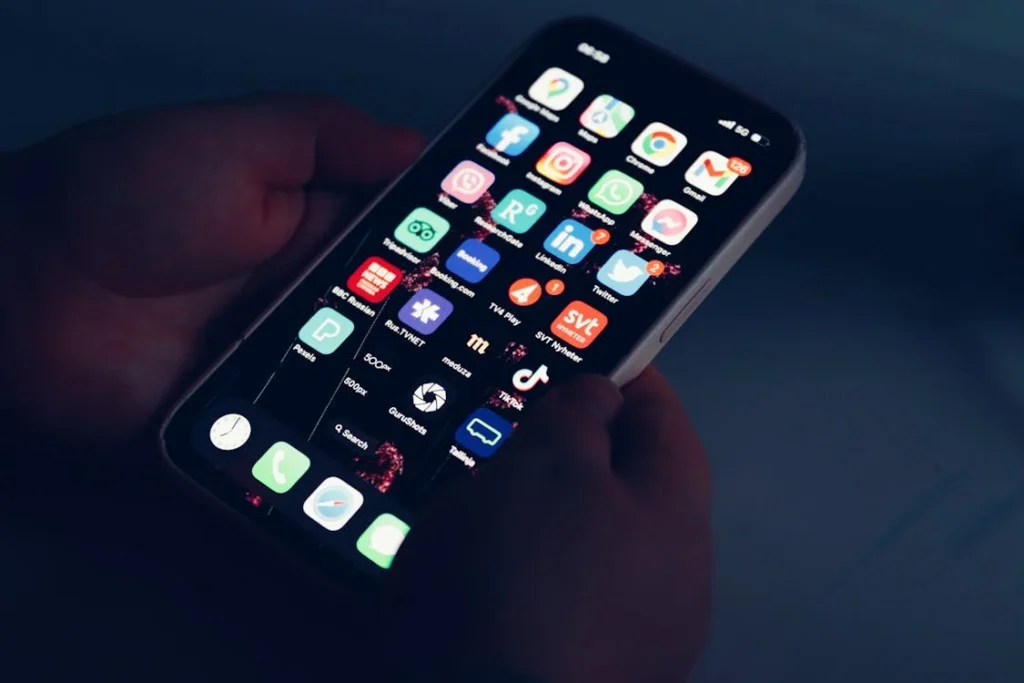Disability discrimination can happen anywhere—in workplaces, schools, public spaces, and even healthcare facilities. It can take many forms, such as denial of employment, unequal treatment, lack of accessibility, harassment, or refusal to provide reasonable accommodations. While India has strong laws to protect the rights of persons with disabilities, discrimination still occurs because of lack of awareness, poor enforcement, and societal biases.
If you or someone you know has faced discrimination due to a disability, you have the legal right to file a complaint and seek justice. The process may seem complicated, but knowing where to report, how to gather evidence, and whom to approach can make a significant difference.

Understanding Disability Rights in India
Before filing a complaint, it is important to understand the legal protections available under Indian law. The Rights of Persons with Disabilities (RPWD) Act, 2016, is the main law that safeguards persons with disabilities from discrimination.
It applies to employment, education, healthcare, public services, and private establishments, ensuring that persons with disabilities receive equal opportunities and fair treatment.
Key Protections Under the RPWD Act, 2016
The law states that no individual can be denied a job, education, or access to public services because of their disability.
Employers, schools, hospitals, and businesses must provide reasonable accommodations, such as ramps, assistive technology, flexible work arrangements, or modified learning materials.
It also prohibits harassment and unfair treatment, ensuring that persons with disabilities are protected from verbal abuse, exclusion, or mistreatment in workplaces, educational institutions, and public spaces.
The law makes it mandatory for government and private organizations to adopt disability-friendly policies. Companies with more than 20 employees must have an Equal Opportunity Policy to prevent discrimination and ensure inclusivity.
If an individual experiences any form of discrimination based on their disability, they have the right to file a complaint with the relevant authorities and seek legal action if necessary.

Steps to File a Complaint for Disability Discrimination
Filing a complaint for disability discrimination in India requires a clear understanding of the process. Whether the discrimination occurred at work, in an educational institution, or in a public space, taking the right steps can help ensure that justice is served.
The process typically involves gathering evidence, approaching the right authorities, and following up until corrective action is taken.
Step 1: Gather Evidence of Discrimination
Before filing a complaint, it is important to collect as much evidence as possible to support your case. Evidence can include written communication such as emails, text messages, or official notices that show discriminatory behavior.
If the discrimination happened in person, keeping a detailed record of the incident, including the date, time, location, and people involved, can be helpful. Witness statements from colleagues, classmates, or bystanders can also strengthen the case.
For workplace discrimination, salary slips, promotion records, or rejection letters can serve as proof that an individual was treated unfairly due to their disability.
In cases related to accessibility issues, photographs or videos showing the lack of ramps, elevators, or assistive facilities can support the complaint.
Step 2: File a Complaint with the Organization or Employer
In many cases, discrimination issues can be resolved internally. If the incident occurred in a workplace, the first step should be to report it to the company’s human resources department or the Equal Opportunity Policy Committee, which every organization with more than 20 employees is required to have.
Many organizations have an internal grievance redressal system in place to address complaints related to workplace discrimination.
For educational institutions, the complaint should be made to the school or college administration. In cases involving hospitals or public spaces, the issue can be raised with the relevant department managing the facility.
Keeping a written record of the complaint and any responses received is important in case the matter needs to be escalated.
If the organization does not take action or dismisses the complaint without proper investigation, the next step is to approach the relevant government authority.
Step 3: Approach the State Commissioner for Persons with Disabilities
If an individual does not receive a satisfactory response from the organization or employer, they can escalate the complaint to the State Commissioner for Persons with Disabilities.
Every state in India has a commissioner responsible for handling cases related to disability rights violations.
The complaint can be filed in writing or through an online submission, depending on the facilities available in the concerned state.
The application should include details of the incident, evidence collected, and any prior attempts to resolve the matter with the employer or institution.
Once the complaint is received, the commissioner’s office investigates the case, seeks explanations from the accused party, and ensures corrective measures are taken.
If discrimination is proven, the organization may be asked to reinstate an employee, provide reasonable accommodations, or take disciplinary action against those responsible.
Step 4: Filing a Complaint with the Chief Commissioner for Persons with Disabilities
If the issue is not resolved at the state level or if the discrimination involves a central government department or large corporate entity, the next step is to file a complaint with the Chief Commissioner for Persons with Disabilities (CCPD) at the national level.
This office handles serious cases where state authorities have failed to take appropriate action or when the discrimination involves national policies, large organizations, or multiple states.
A complaint to the Chief Commissioner must be submitted in writing, either by mail or through an online grievance portal if available. It should include all previous correspondence, evidence, and details of why the state commissioner’s intervention was not sufficient.
The Chief Commissioner’s office has the authority to conduct inquiries, summon officials, and issue directives to ensure compliance with disability rights laws.
The office may also provide recommendations for systemic changes to prevent future cases of discrimination.
For example, if a company consistently denies promotions to employees with disabilities, the CCPD may instruct the organization to update its policies, train its managers, or impose penalties for non-compliance.
Step 5: Seeking Legal Action Through Courts
If all administrative options fail to provide justice, individuals can approach the courts to file a case against the employer, institution, or organization responsible for the discrimination.
Depending on the nature of the case, the complaint can be taken to a labor court, consumer court, or the High Court.
For workplace discrimination cases, labor courts handle disputes related to unfair treatment, wrongful termination, and denial of employment rights.
If the discrimination involves a private business, service provider, or public facility, consumer courts may be approached for violation of rights under the Consumer Protection Act.
In cases of severe human rights violations, individuals can file a public interest litigation (PIL) in the High Court or Supreme Court to seek justice not just for themselves but for others facing similar discrimination.
Legal aid organizations and disability rights advocacy groups can help guide individuals through the legal process and represent them in court if needed.
Legal action can result in compensation for damages, reinstatement in a job, fines imposed on the responsible organization, or structural changes in workplace and institutional policies to prevent future discrimination.
Step 6: Involving Disability Rights Organizations and NGOs
Many cases of disability discrimination are complex and require external support. Non-governmental organizations (NGOs) and disability rights groups can provide legal assistance, advocacy, and guidance on how to navigate the complaint process.
These organizations often have legal teams that specialize in disability rights cases and can represent individuals before government agencies and courts.
NGOs also work on raising public awareness, conducting policy advocacy, and holding businesses and government institutions accountable for discrimination.
If a complaint is not receiving the attention it deserves, involving a disability rights organization can increase pressure on authorities to act.

Challenges in Filing a Disability Discrimination Complaint
While legal protections exist, many individuals face significant barriers when trying to file a complaint for disability discrimination. Understanding these challenges can help individuals prepare better and seek the right support to overcome them.
Lack of Awareness About Legal Rights
One of the biggest challenges is the lack of awareness about disability rights. Many persons with disabilities and their families do not know that they have legal protections under the RPWD Act, 2016.
As a result, they may not realize that they can file complaints against discrimination at work, in schools, or in public places.
Even when individuals are aware of their rights, they may not know the correct procedures to follow or which authority to approach. This often leads to delays in reporting violations, allowing discrimination to continue unchecked.
Bureaucratic Delays and Inefficiency
Filing a complaint with government authorities can sometimes be a slow and frustrating process. Many state disability commissioners handle multiple cases, leading to long processing times.
Some government offices lack the resources to conduct proper investigations, causing further delays in resolving complaints.
Applicants are often required to submit multiple documents, attend hearings, and follow up repeatedly before any action is taken.
For individuals with mobility impairments or those living in rural areas, traveling to government offices can be difficult, making the process even more challenging.
Fear of Retaliation
Many employees with disabilities hesitate to report workplace discrimination because they fear losing their jobs or facing further mistreatment.
In some cases, employers retaliate by creating a hostile work environment, reducing work responsibilities, or denying promotions. This discourages individuals from taking action, even when they experience clear violations of their rights.
To address this issue, the law prohibits retaliation against employees who file discrimination complaints. However, in reality, enforcement remains weak, and many victims of discrimination choose to stay silent rather than risk their job security.
Limited Accessibility of Complaint Mechanisms
For persons with disabilities, filing a complaint should be an easy and accessible process. However, many government offices, legal aid centers, and complaint portals are not fully disability-friendly.
Websites may not have screen reader compatibility for visually impaired users, and in-person visits may be difficult for individuals with mobility impairments.
Language barriers can also be a problem, as many complaint forms and legal documents are only available in English or Hindi, making it harder for people from non-Hindi-speaking regions to file complaints.
These accessibility issues create unnecessary hurdles for those seeking justice.
Inconsistent Enforcement of Disability Laws
While the RPWD Act, 2016, sets clear guidelines for protecting disability rights, enforcement varies across different states and industries. Some companies follow the law strictly, while others ignore it due to weak regulatory oversight.
Government agencies responsible for monitoring disability rights often lack the funding, staff, or expertise needed to enforce compliance effectively. As a result, many cases go unresolved, leaving persons with disabilities without the justice they deserve.

Solutions to Strengthen the Complaint Process and Enforce Disability Rights
While there are challenges in filing and resolving disability discrimination complaints, solutions exist to make the process more effective.
Strengthening enforcement, improving accessibility, and increasing awareness can ensure that persons with disabilities receive the justice they deserve.
Simplifying the Complaint Process
The government needs to make it easier for persons with disabilities to file complaints. A centralized online grievance portal that is accessible in multiple languages and optimized for screen readers would help streamline the process.
This platform could allow individuals to file complaints digitally, track the status of their case, and receive updates without having to visit government offices.
In addition, disability rights helplines should be set up in every state to provide guidance on where and how to file complaints. These helplines should be available in regional languages and cater to different disability needs, such as sign language support for the hearing impaired.
Faster Investigation and Resolution of Cases
Many cases of discrimination remain unresolved due to slow investigation processes. State Disability Commissioners need more resources and trained personnel to handle complaints efficiently.
Setting a fixed timeline for resolving cases—such as requiring an investigation to be completed within 60 days—could help speed up justice for complainants.
Independent monitoring bodies should be established to review unresolved cases and ensure that government officials act on complaints without unnecessary delays. Stronger penalties should be imposed on organizations that repeatedly fail to comply with disability rights laws.
Stronger Protections Against Workplace Retaliation
To encourage more employees to report workplace discrimination, stronger protections against retaliation must be enforced. Companies should be required to keep the identity of complainants confidential and conduct internal investigations in a fair and unbiased manner.
Legal mechanisms should be strengthened to penalize employers who take adverse actions against employees who file complaints.
Employees who face wrongful termination due to discrimination complaints should have the right to immediate reinstatement, along with financial compensation for damages.
Expanding Awareness Campaigns
Raising awareness about disability rights is key to preventing discrimination before it happens.
The government, NGOs, and corporate organizations should work together to launch nationwide awareness campaigns that educate persons with disabilities about their rights and the complaint process.
Employers should also be required to conduct regular disability inclusion training for managers and HR personnel.
These programs should focus on creating inclusive workplaces, understanding reasonable accommodations, and ensuring equal opportunities for persons with disabilities.
Holding Organizations Accountable for Compliance
Companies, schools, hospitals, and government offices that fail to comply with disability laws should face stricter penalties.
Regular audits should be conducted to check whether organizations have implemented Equal Opportunity Policies, made their workplaces accessible, and addressed past complaints.
A public disability rights compliance report could be introduced, where businesses and institutions are ranked based on their adherence to disability laws. This would create public accountability and encourage companies to improve their policies to avoid reputational damage.
Encouraging Disability Advocacy and Legal Support
NGOs and disability rights groups play a vital role in ensuring that persons with disabilities get justice. Legal aid organizations should offer free legal support to individuals who want to file discrimination complaints but lack financial resources.
More lawyers should be trained in disability rights law to represent complainants in court when needed.
Stronger community advocacy can also help pressure organizations and government agencies to take disability complaints seriously.
Social media campaigns and public protests have been effective in bringing attention to discrimination cases in the past, and they remain powerful tools for demanding change.

The Role of Technology in Strengthening Disability Rights Enforcement
Technology can play a major role in making the complaint process more efficient, accessible, and transparent for persons with disabilities.
By integrating digital solutions into the legal framework, India can bridge gaps in enforcement and make it easier for individuals to report and track discrimination cases.
Online Grievance Portals for Faster Complaint Resolution
A centralized digital grievance platform specifically designed for disability-related complaints would simplify the process of reporting discrimination.
This portal should allow users to submit complaints, upload evidence, and track case progress in real-time. Features like chatbot assistance, voice-based navigation, and sign language support can make it more accessible to a wider range of disabilities.
Government agencies, including the State Disability Commissioners and the Chief Commissioner for Persons with Disabilities, should be integrated into the system to ensure that complaints are directed to the correct authorities without delays.
Automatic reminders and case tracking updates via SMS and email can keep complainants informed and reduce the frustration of waiting for responses.
AI-Powered Accessibility Audits for Workplaces and Public Spaces
Many complaints about disability discrimination arise due to lack of accessibility in workplaces, schools, and public buildings. AI-powered tools and mobile applications can be developed to assess the accessibility of physical spaces.
For example, a mobile app could allow users to scan a workplace or public building and receive an instant accessibility score based on legal standards.
If violations are found—such as missing ramps, inaccessible washrooms, or improper seating arrangements—users could file complaints directly from the app.
This technology would create real-time accountability for organizations and push them to comply with accessibility laws.
Blockchain for Transparency in Legal Proceedings
A blockchain-based system for tracking complaints could be introduced to ensure that cases are not tampered with or ignored by authorities. Blockchain technology can securely record every step of the complaint process, from filing to final resolution.
Since blockchain data cannot be altered or deleted, this system would ensure that all disability-related complaints are addressed fairly and transparently.
It would also allow individuals, advocacy groups, and government agencies to verify case progress without the risk of manipulation or bureaucratic delays.
Digital Evidence Collection for Stronger Cases
A significant challenge in fighting discrimination is collecting and preserving evidence. A dedicated evidence documentation app could help persons with disabilities securely store audio recordings, video footage, emails, and other proof of discrimination incidents.
This app could automatically timestamp and encrypt files, ensuring that the evidence remains authentic and admissible in court. If needed, complainants could share their evidence directly with legal representatives, government agencies, or NGOs for further action.
Virtual Legal Assistance and AI-Based Legal Guidance
Many persons with disabilities struggle to access legal support due to financial constraints or mobility challenges. AI-powered virtual legal assistants could help bridge this gap by offering instant legal guidance based on existing disability laws.
Users could input details about their situation, and the system could provide recommendations on where to file complaints, what evidence to collect, and what legal options are available.
This would make it easier for individuals to navigate the legal process without relying on expensive lawyers or physically visiting legal offices.
Leveraging Social Media and Digital Advocacy
Social media has become a powerful tool for driving change, and disability rights movements can use it to hold organizations accountable.
Platforms like Twitter, Facebook, and LinkedIn can be used to highlight discrimination cases, mobilize public support, and pressure authorities into taking swift action.
Live-streamed public discussions, online petitions, and digital advocacy campaigns can amplify voices and bring disability issues to national attention.
Organizations that repeatedly violate disability rights can be named and shamed online, forcing them to take corrective measures to protect their reputation.
Bringing Disability Rights into India’s Digital Future
By integrating technology into disability rights enforcement, India can make the complaint process faster, more accessible, and more transparent.
These digital solutions would not only help individuals seek justice but also encourage organizations to comply with legal requirements proactively.
The future of disability rights lies in leveraging innovation to eliminate barriers and ensuring that persons with disabilities have equal access to employment, education, and public spaces.
If technology is implemented effectively, it can transform the way discrimination cases are handled and create a truly inclusive society.

Building a Culture of Inclusion to Prevent Disability Discrimination
While legal protections and complaint mechanisms are necessary, the ultimate goal should be to prevent disability discrimination before it happens.
This requires a cultural shift in how society views disability, workplaces, and public institutions. Changing deep-rooted biases and fostering a more inclusive environment can help reduce discrimination and create a fairer system for persons with disabilities.
Disability Inclusion in Education
Education plays a key role in shaping societal attitudes. Schools and colleges must integrate disability awareness into their curriculum to promote understanding and empathy from an early age.
When children grow up seeing disability as a normal part of life, they are less likely to engage in discriminatory behavior as adults.
Teachers should be trained to create inclusive classrooms where students with disabilities receive the support they need without being isolated.
Schools must ensure that infrastructure, teaching materials, and examination processes accommodate students with disabilities. If education is truly inclusive, the workforce of the future will naturally become more accepting and diverse.
Shifting Mindsets in Workplaces
Many employers still see disability as a limitation rather than a form of diversity that adds value to an organization. Shifting this mindset requires leadership commitment and continuous education.
Companies must focus on ability rather than disability, ensuring that hiring, promotion, and training decisions are based on skills and performance rather than physical or cognitive conditions.
Workplaces should actively celebrate disability inclusion by recognizing the contributions of employees with disabilities.
Publicly sharing success stories of disabled professionals can help dismantle stereotypes and encourage more organizations to adopt inclusive hiring practices.
Training programs for managers and HR professionals can help create a bias-free work culture. These sessions should focus on legal responsibilities, the benefits of hiring persons with disabilities, and practical strategies for making the workplace more inclusive.
Making Public Spaces Truly Accessible
Accessibility should not be treated as an afterthought but as a fundamental requirement in city planning, public transport, and business operations.
Public buildings, malls, entertainment venues, and transport services must ensure that persons with disabilities can navigate spaces without barriers.
Governments should encourage businesses to adopt universal design principles by offering financial incentives or recognition programs for companies that excel in accessibility.
A certification system, similar to environmental ratings, could be introduced to rank public buildings and offices based on disability accessibility standards.
Representation and Visibility of Persons with Disabilities
One of the strongest ways to prevent discrimination is to ensure that persons with disabilities are visible in all aspects of society. Whether in politics, media, corporate leadership, or public services, disability representation can challenge existing biases and normalize inclusion.
The media has a responsibility to portray disability in a way that reflects real-life experiences. Instead of portraying persons with disabilities as objects of pity or inspiration, storytelling should focus on their rights, achievements, and contributions to society.
More individuals with disabilities should be featured in advertisements, films, and news reports to reinforce the idea that they are an integral part of the workforce and community.
The Role of Communities in Driving Change
Local communities can be powerful agents of change in promoting disability inclusion. NGOs, resident associations, and social organizations should take an active role in advocating for better policies and holding businesses accountable for accessibility and fair treatment.
Community-driven initiatives, such as disability awareness walks, inclusive job fairs, and mentorship programs, can help bridge the gap between persons with disabilities and mainstream society.
Encouraging volunteerism and partnerships between disabled and non-disabled individuals can also foster deeper understanding and cooperation.
A Future Without Disability Discrimination
Legal protections and complaint mechanisms are crucial, but true change happens when discrimination is no longer an issue in the first place.
A combination of policy reforms, workplace inclusion, accessible public infrastructure, and disability representation can help build a future where persons with disabilities no longer have to fight for their rights—they will already have them.
Conclusion
Filing a complaint for disability discrimination in India is an important step toward ensuring fairness and justice. While legal protections under the RPWD Act, 2016 provide strong safeguards, enforcement remains a challenge. Understanding the complaint process, gathering evidence, and approaching the right authorities can help individuals fight discrimination effectively. However, the goal should not just be legal action—it should be preventing discrimination from happening in the first place.
Creating a truly inclusive society requires efforts from government agencies, employers, educational institutions, and communities. Stronger enforcement of laws, accessible complaint mechanisms, and widespread disability awareness can help bridge the gap between policy and practice. Workplaces and public spaces must move beyond compliance and actively promote inclusion, while the media and leadership roles should reflect greater disability representation.
A discrimination-free future is possible when persons with disabilities are treated as equal members of society, not as exceptions. With continuous advocacy, better policies, and collective action, India can move toward a world where persons with disabilities do not have to fight for their rights—they are simply upheld.
If you are looking for advanced prosthetic solutions and rehabilitation support, Robobionics is here to help. Contact us today to explore our innovative assistive technology designed for better mobility and independence!



